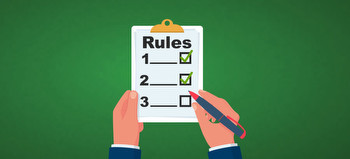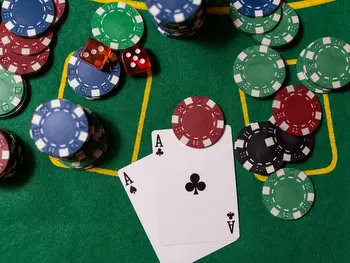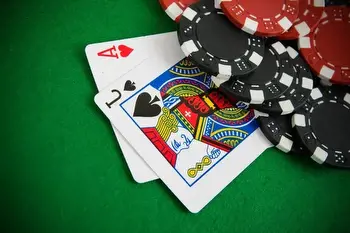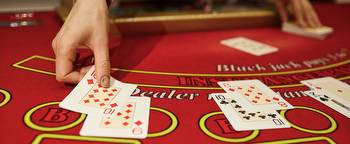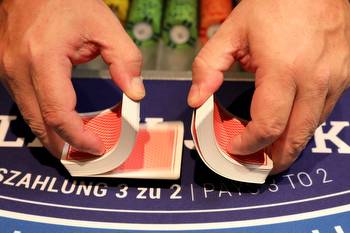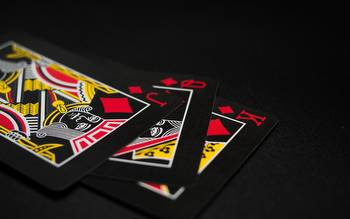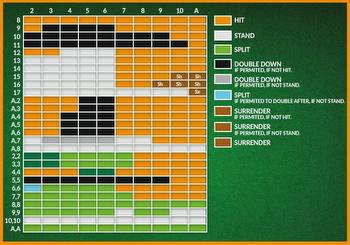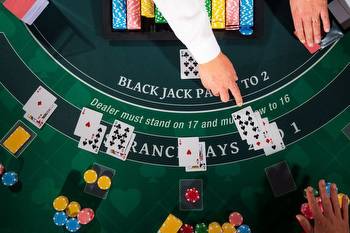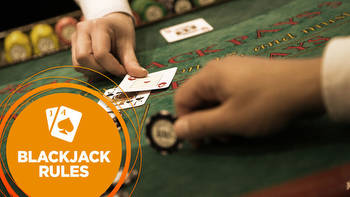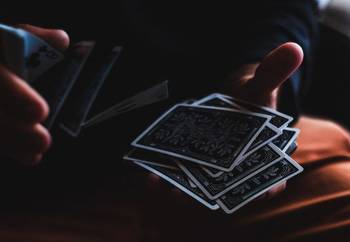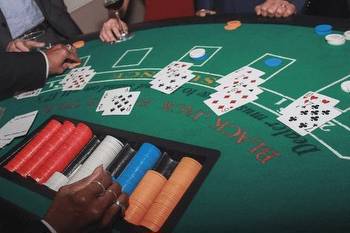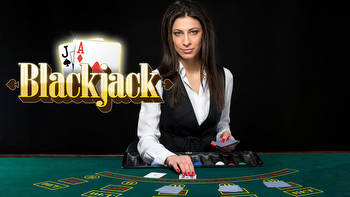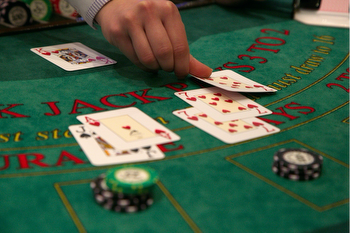Learn How to Play Blackjack Blackjack Rules

Like many other casino games, blackjack has simple rules which are easy to grasp. Yet when you watch more advanced players, you will notice just how skilfully they play blackjack to maximise their chances of success.
The internet has made it easier and more fun than ever before to play blackjack, with anyone being able to play blackjack online, but how did blackjack become one of the most popular casino games worldwide?
Blackjack’s roots can actually be traced to as early as the 17th century, but the first recorded game occurred in France in the 1760s and in Britain during the 1770s. It was originally known as Vingt-et-Un, twenty-one in French. The game was popularised in America in the early 20th century, with most sources agreeing it found fame during World War I.
The Objective of Blackjack
To understand the rules of blackjack, a novice player should always remember the game is also known as Twenty One. So the aim of blackjack is to beat the house dealer by presenting a hand of cards which is as close as possible to a total of 21, while never exceeding that total.
Blackjack Rules
Blackjack is such a widely played game that many versions of it exist with unique rules that may change from casino to casino, in order to understand how to play Blackjack with William Hill, read and follow the rules below.
Card Values
In a round of blackjack, each card is counted at its original number value. In addition, each of the face cards (J, Q, K) also has a value of 10. The blackjack Ace is a special case. According to what advantage it brings, it’s up to the player to decide whether an Ace they hold will count as 1 or 11.
Betting
A blackjack round begins with each player placing their bet. This is done by placing chips in the designated betting area in front of the player. There will beagreed minimum and maximum bet limits, so it’s important to check what these limits are before placing any bet on the table.
Naturals
If a player’s first two cards are an ace and a ten-card, then this is known as a natural. If a player has a natural and the dealer does not, the dealer will pay out one and a half times the player’s betting amount.
The Play
Starting to the left of the dealer, each player takes it in turns to play, going around to the right until everyone has taken their turn. The player has four choices upon their turn, to “stand” with the cards they have or “hit” to be dealt another card, to “double down” on their bet and be given one final card, or to “surrender”. Even for new players the style is straightforward and can be picked up quickly.
The Dealer’s Play
After customers have placed their bets and the game commences, the dealer will deal clockwise until each player has two cards facing upwards, with the last card for the dealer being placed face down.
If the dealer’s card is an ace, they would ask if anyone wants insurance which pays out at 2/1 odds. This is a bet that the dealer DOES have a natural.
The dealer will then take it in turns starting on their left to ask whether the player will choose to stand or hit.
Blackjack Strategy: Terms
- Deal – Once all bets have been placed, the dealer then deals out the cards. Starting from the left, each player receives one card dealt face up. The dealer also receives one card presented face up. A second round of cards is dealt in the same manner, but this time the dealer’s card remains face down.
- Hit – The term hit is used by the player to request a new card. Players will ask for a hit when they believe an extra card will take them closer to the optimum blackjack score of twenty-one.
- Stand – This expression is used by any player wishing to indicate they want to draw no more cards. That usually means the player is quite confident the cards they already possess will better the dealer’s score. One of the tricky parts of blackjack is knowing when to stand and when to hit. If a player’s hand exceeds 21, that hand is ‘bust’ – meaning they can no longer win that round.
Blackjack Strategy Chart
Having knowledge of the options available while in play will help you decide how to play your hand. The following chart describes the blackjack strategies available to a player.
The chart layout tracks the two most important game features: On the extreme left column, you will find the total for your hand, while the dealer’s own (face) up card is recorded across horizontally from the top down. Checking the chart positions both down and across, where those two rows and columns meet is where you’ll discover the best strategic option for that particular game moment.
Chart calculations are based on statistical calculations and present you with the smartest mathematical choice. However, while this represents high-quality data analysis, it carries no absolute guarantee of success. After all, if such chart predictions were never wrong, casinos would simply withdraw the game from their website. So players must accept that the chart will not entirely eliminate the element of chance.
The following charts describe some of the blackjack strategies open to a player:
Split pairs
When a player’s first two cards are the same value (e.g. two sevens) they can opt to treat them as two separate hands. The original bet goes on one of the pair, and an equal amount must then be wagered on the other. The player must play their leftmost hand first up by hitting or standing one or more times; then the card to the right is played likewise. The outcome of each hand is always treated separately. When a pair of aces are split, the player is dealt one more card for each ace and may not draw further cards.
Doubling down
With an original two-card hand totalling 9, 10, or 11, the player has the option of doubling their bet. When their turn arrives, the player places a bet which equals their original bet and they are dealt just one more card. This is left face down and must not be turned over until the betting is settled at the finish of the hand*. When a hand consists of a pair of fives, the player has the option to split the pair, double down as described, or just choose to play out the hand as normal. It’s important to remember the dealer cannot split or double down.
*Please note that doubling down can sometimes be played with the card facing up.
Surrender
A surrender can occur when the house permits a player to fold their original hand before drawing any extra cards. When this happens, half of the player’s original bet is returned and those cards are withdrawn from that play. Remember that once a surrender is actioned, that player takes no further part in the hand – even if the dealer should then go bust.
Not all tables will allow a surrender – so always check the table rules. In a live game, players indicate they want to surrender by running a finger across behind their bet. Online games with this option will display a surrender button.
Insurance
If the dealer’s own face-up card is an ace, any players at the table can take up a further side bet for up to half the amount of their original wager. This bet predicts the dealer’s remaining face-down card will score ten – resulting in a house blackjack. The dealer waits until all these side bets are placed before revealing the final card. If this turns out to be a ten-card, those making the insurance bet are paid out at twice the amount of their own half-bet, which represents a 2:1 payout. Once a dealer blackjack occurs, the hand is finished and all the main table bets are collected in. However, if another player also has a 21 blackjack, this results in a stand-off. An insurance bet is rarely a good option for the player unless they are confident there is a high number of ten-cards still left in the pack.
Blackjack rules UK: Odds
Any blackjack strategy will always consider the odds and probabilities of winning a blackjack hand. The most important decision for a player is the probability of going bust when hitting on an extra card. While the blackjack best odds of busting are only 31% if your two-card hand totals 12, they rise to 58% for a 15 total, and 85% for a 19.
The dealer’s position must also be taken into account. For example, with one card still face down, the dealer’s probability of busting while holding a six is 42-44%.
Blackjack Strategy: Further tips
Here are some further tips and tricks you should remember to inform your basic blackjack strategy:
- The 10’s rule – If you think about it, ten-cards are extremely common in a blackjack deck. So it’s very reasonable to conclude every upcoming card, and the dealer’s hole (face-down) card, will have a value of 10.
- Don’t split your 10’s – If your hand already totals 20, that’s a tough score to beat. So choosing to split those two ten-cards will drastically reduce your chances of producing a winning hand.
- Hit on soft 17 – You won’t go bust with a score of soft 17. In fact, there is a reasonable chance of ending up with 21. So deciding to stand on soft 17 is a very poor strategy.
- Be wary of a hard 17 – A score of 17 is fairly low, but it’s remarkably easy to go bust. Statistically speaking, unless your dealer’s visible up card is between 3 and 6, you have only a slight chance of a win on a hard 17 hand.
- A 16 is a very poor total – You can’t salvage a win on 16, unless the dealer actually goes bust. The best thing is to ‘hit and hope’ that you turn up a 5 which would be your dream option.
- Don’t split on 4’s or 5’s – If you split here, you will be stuck with very low totals. However, hitting as an alternative will take you to a safer area altogether, where you still won’t go bust.
- Split on Aces and 8’s – A soft 2 is a woeful total. So you’re better off having two separate attempts at landing a blackjack. And don’t forget, 16 is yet another awful total. So split your eight-cards knowing you won’t go bust with your first hit.
- Doubling down carries a risk – Because you’ll only receive one further card, this can be a tricky move. Only double down when you’re feeling lucky and hold:
- a total of 11, while the dealer’s up card is anything other than an Ace or a face card.
- a total of 10, while the dealer’s up card is anything other than an Ace, a face card, or a 10.
- a total of 9, while the dealer’s up card is anything between 3 and 7.
How to learn Blackjack strategy
The best way to learn blackjack strategy is to read this guide, start out with learning blackjack rules then study the blackjack strategy charts and think about what you would do in different situations.
Would you choose to ‘hit’ when dealt a 15? Would you split your cards? Would you double down your bet if dealt a nine?
Thinking about all these scenarios before you deposit and play will only improve your chances of success.
Perfect blackjack strategy takes time and practice to acquire, but don’t worry, with the help of this guide you will be well on the way to mastering the basics.
How to Play Blackjack at William Hill
After completing adequate online research, simply playing is the best way to learn. Start with a basic blackjack strategy and learn one chart at a time. Remember not to risk more than you can afford to lose, especially when starting out and learning, and practice with small bet amounts first.
Register at William Hill
When you register for a William Hill online casino account, you just have to click on the ‘sign up to William Hill’ button. Next, you will be asked to enter the relevant personal information on the registration page. And once you have clicked to confirm and added your deposit, you will be ready to bet.
FAQs
What is the basic strategy at William Hill based on?
William Hill is an established company and over the years our strategy has been defined by our loyal customers who have played for many years. It aims to mathematically present you with the best chance possible to win the game but is not a guarantee of successful performance.
How to memorise these strategies?
Strategies for memory can vary from person to person, as we all have unique ways of learning, but after having educated yourself on the general rules and strategy, the best way to pick it up is to practice.
How long will it take to memorise the strategy on the charts?
As mentioned previously, the best way to learn is by practicing, and if you use the strategy alongside practicing it shouldn’t take longer than a few times to memorise at least the basics of the strategy.
Which is the most important blackjack strategy?
It is recommended that novices learn the basic blackjack strategy first as it will give a solid foundation for playing the game, especially for new players.









